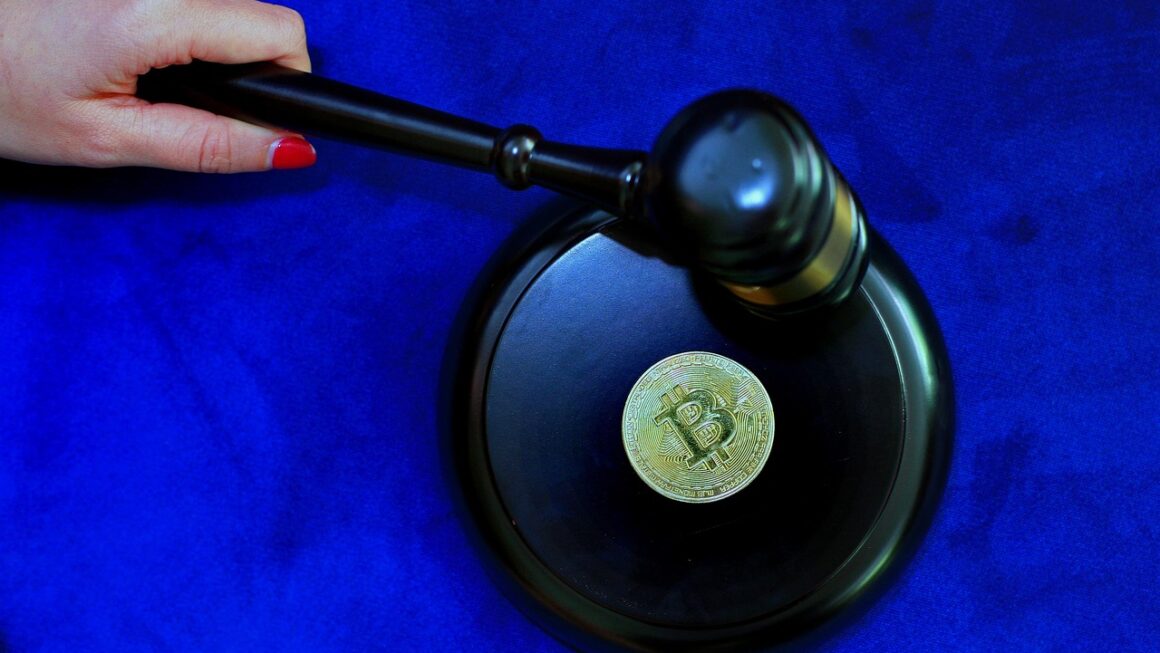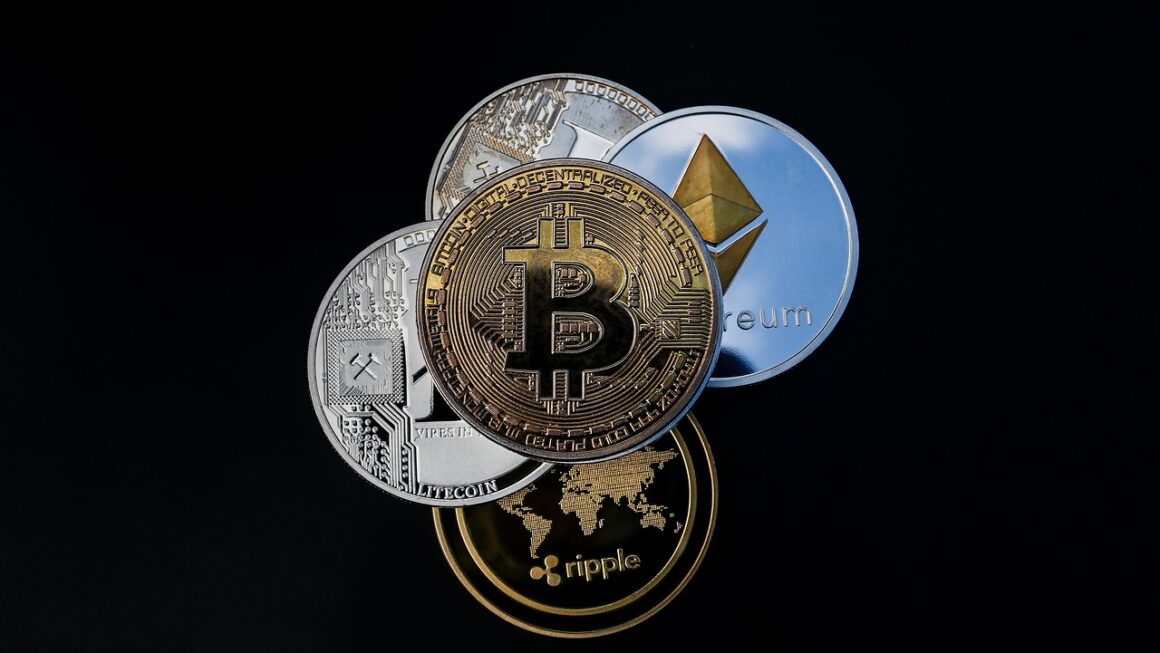Decentralized Finance (DeFi) is rapidly transforming the financial landscape, offering a compelling alternative to traditional, centralized systems. Imagine a world where you control your assets, access financial services directly, and participate in a transparent, secure ecosystem. This is the promise of DeFi, and this blog post will delve into its intricacies, exploring its benefits, challenges, and potential impact on the future of finance.
What is Decentralized Finance (DeFi)?
Definition and Core Principles
Decentralized Finance, or DeFi, refers to a blockchain-based financial system built on decentralized networks, primarily Ethereum. It aims to replicate traditional financial services like lending, borrowing, trading, and insurance without intermediaries like banks or brokers. Key principles driving DeFi include:
- Decentralization: Control is distributed across a network rather than concentrated in a single entity.
- Transparency: Transactions and code are publicly auditable on the blockchain.
- Permissionless Access: Anyone with an internet connection can participate, regardless of location or background.
- Immutability: Once recorded on the blockchain, transactions cannot be altered or reversed.
- Composability: DeFi applications can be built upon each other, creating innovative and interconnected financial products.
How DeFi Differs from Traditional Finance (TradFi)
Traditional finance relies on centralized authorities to manage and control financial activities. DeFi, on the other hand, utilizes smart contracts – self-executing agreements written in code – to automate processes and remove the need for intermediaries. Here’s a comparison:
- Centralized Control vs. Decentralized Governance: TradFi institutions dictate the rules, while DeFi projects often involve community governance through token voting.
- Limited Access vs. Open Access: TradFi can be restrictive based on credit scores and location; DeFi provides universal access.
- Opaque Operations vs. Transparent Transactions: TradFi operations are often hidden behind closed doors; DeFi transactions are publicly recorded on the blockchain.
- Intermediary Fees vs. Reduced Costs: TradFi involves fees charged by banks and brokers; DeFi aims to reduce these costs through automation and decentralization.
Key Components of the DeFi Ecosystem
Decentralized Exchanges (DEXs)
DEXs facilitate the trading of cryptocurrencies directly between users without a central intermediary. Examples include:
- Uniswap: An automated market maker (AMM) where users provide liquidity to trading pools and earn fees. Uniswap is one of the most popular DEXs, consistently handling billions of dollars in daily trading volume.
- SushiSwap: Another AMM that also offers staking and yield farming opportunities. SushiSwap differentiated itself by offering its SUSHI token as a governance token.
- Curve Finance: Specialized for stablecoin swaps, offering lower slippage and fees compared to other DEXs.
Lending and Borrowing Platforms
These platforms allow users to lend their crypto assets and earn interest or borrow assets by providing collateral. Examples include:
- Aave: A decentralized lending protocol allowing users to borrow and lend a variety of cryptocurrencies. Aave introduced innovative features such as flash loans, which allow users to borrow without collateral for the duration of a single transaction.
- Compound: Another lending protocol where interest rates are algorithmically adjusted based on supply and demand. Compound’s COMP token is a governance token, allowing holders to participate in protocol upgrades.
Stablecoins
Stablecoins are cryptocurrencies designed to maintain a stable value, typically pegged to a fiat currency like the US dollar. Examples include:
- USDT (Tether): One of the most widely used stablecoins, pegged to the US dollar. USDT has faced scrutiny regarding its reserves.
- USDC (USD Coin): Another popular stablecoin, backed by fully reserved assets held in regulated financial institutions. USDC is known for its transparency and regulatory compliance.
- DAI (MakerDAO): A decentralized stablecoin algorithmically pegged to the US dollar, backed by cryptocurrency collateral locked in smart contracts.
Yield Farming and Staking
Yield farming involves providing liquidity to DeFi protocols to earn rewards in the form of additional tokens. Staking involves locking up cryptocurrency to support a blockchain network and earn rewards.
- Yield Farming Example: Supplying liquidity to a Uniswap pool and receiving UNI tokens as rewards.
- Staking Example: Staking ETH on the Ethereum 2.0 network to earn rewards for validating transactions. Platforms like Lido Finance simplify the staking process.
Benefits of Using DeFi
Increased Accessibility and Financial Inclusion
DeFi provides access to financial services for individuals who are underserved or excluded by traditional financial systems.
- Global Reach: Anyone with an internet connection can participate in DeFi.
- No Credit Checks: DeFi lending platforms often rely on collateral rather than credit scores.
- Lower Minimums: DeFi allows participation with smaller amounts of capital compared to traditional investments.
Enhanced Transparency and Security
DeFi’s reliance on blockchain technology ensures transparency and security.
- Publicly Auditable Code: Smart contracts are open-source and can be audited by anyone.
- Immutable Records: Transactions are permanently recorded on the blockchain.
- Reduced Counterparty Risk: Smart contracts automate processes, reducing the risk of human error or fraud.
Greater Control and Efficiency
DeFi puts users in control of their assets and offers greater efficiency compared to traditional finance.
- Self-Custody: Users control their own private keys and assets.
- Automated Processes: Smart contracts automate processes, reducing the need for intermediaries.
- Faster Transactions: DeFi transactions can be settled much faster than traditional financial transactions.
Risks and Challenges of DeFi
Smart Contract Risks
Smart contract vulnerabilities can lead to exploits and loss of funds.
- Bugs and Errors: Smart contracts are complex and can contain bugs or errors that hackers can exploit.
- Auditing is Crucial: Thoroughly auditing smart contracts before deployment is essential. Many projects utilize third-party auditing firms.
- Immunefi: Platforms like Immunefi offer bug bounties to incentivize security researchers to find vulnerabilities.
Regulatory Uncertainty
The regulatory landscape for DeFi is still evolving, creating uncertainty for participants.
- Lack of Clear Regulations: Many jurisdictions have not yet established clear regulations for DeFi activities.
- Potential for Regulatory Crackdowns: Regulators may take action against DeFi projects that violate existing laws.
- FATF Guidelines: The Financial Action Task Force (FATF) is developing guidelines for regulating virtual assets, including DeFi.
Scalability Issues
Many DeFi platforms face scalability challenges, leading to high transaction fees and slow processing times.
- Ethereum Network Congestion: High network congestion on Ethereum can result in high gas fees.
- Layer-2 Solutions: Layer-2 scaling solutions like Optimism and Arbitrum are being developed to address scalability issues.
- Alternative Blockchains: Some DeFi projects are exploring alternative blockchains with higher throughput, such as Solana and Avalanche.
Impermanent Loss
In AMMs, impermanent loss can occur when the price of tokens in a liquidity pool diverges, resulting in a loss compared to holding the tokens outside the pool.
- Price Divergence: The greater the price divergence between the tokens, the greater the potential for impermanent loss.
- Providing Liquidity in Stablecoin Pairs: Providing liquidity in stablecoin pairs can reduce the risk of impermanent loss.
- Understanding the Risks: Thoroughly understanding impermanent loss before providing liquidity is crucial.
Conclusion
Decentralized Finance presents a paradigm shift in the financial industry, offering increased accessibility, transparency, and control. While significant risks and challenges remain, the potential benefits of DeFi are undeniable. As the ecosystem continues to evolve and mature, with ongoing advancements in security, scalability, and regulation, DeFi is poised to play a pivotal role in shaping the future of finance. Stay informed, exercise caution, and explore the possibilities of this transformative technology.




